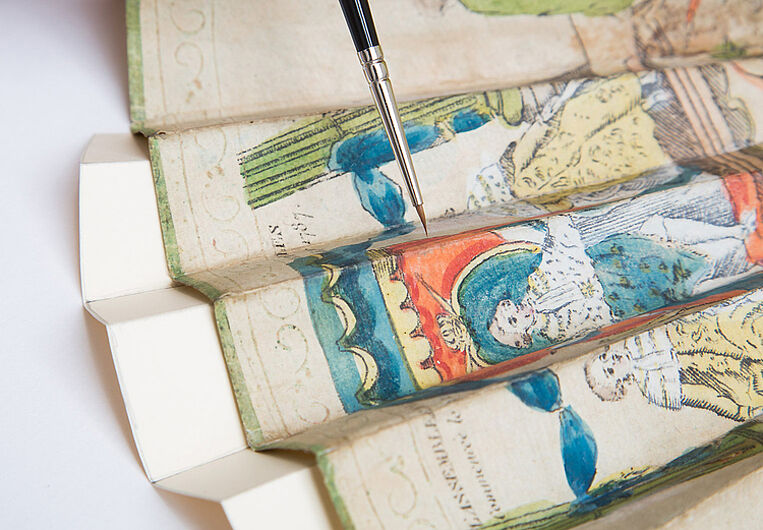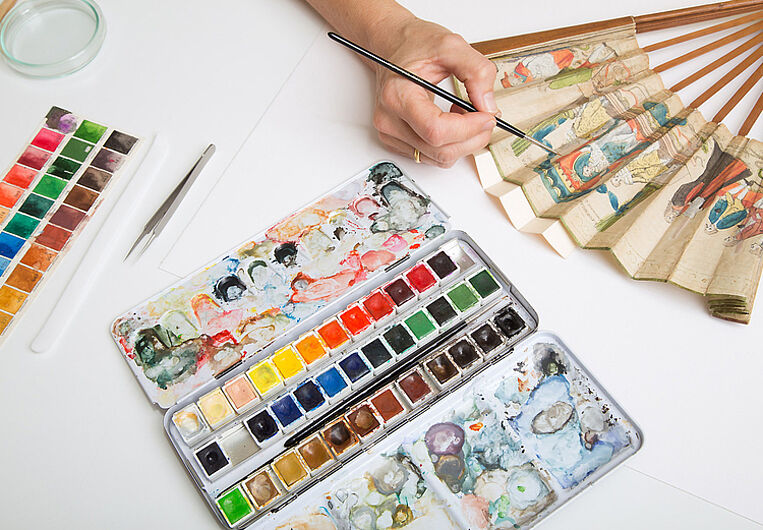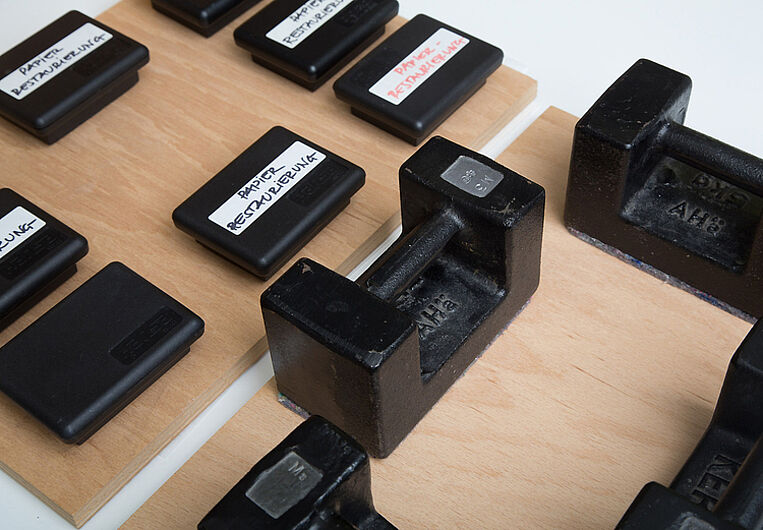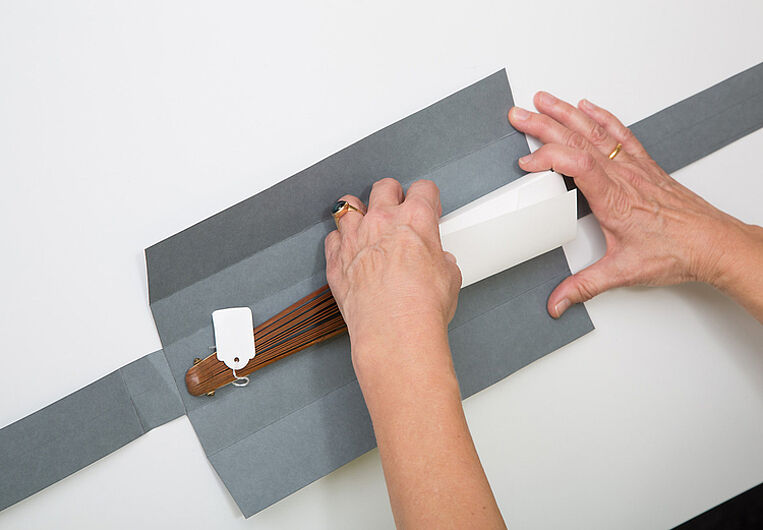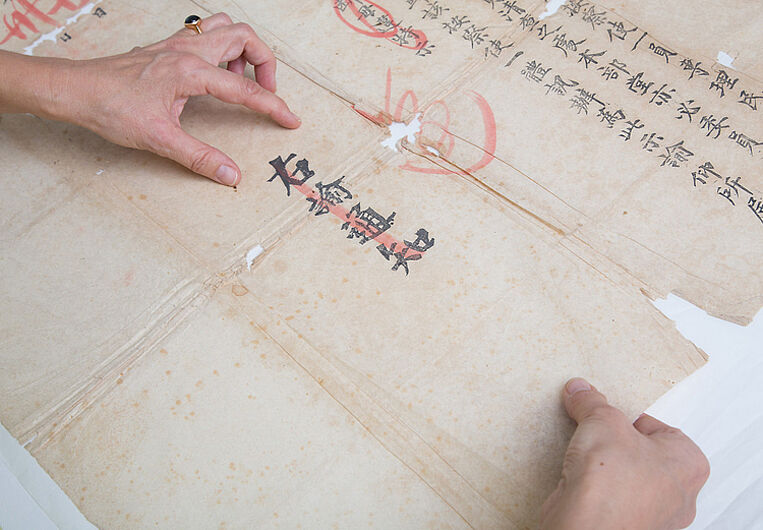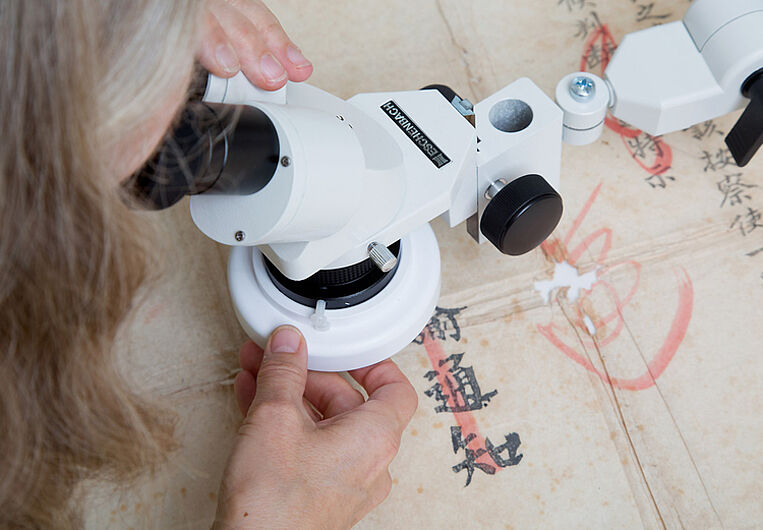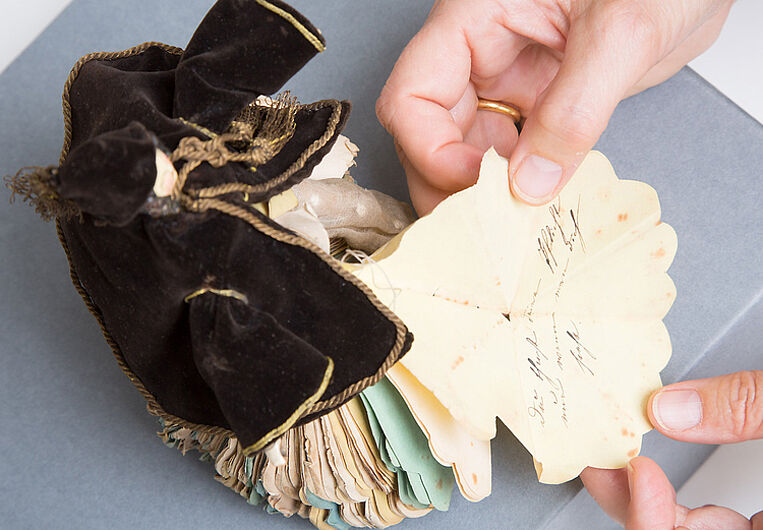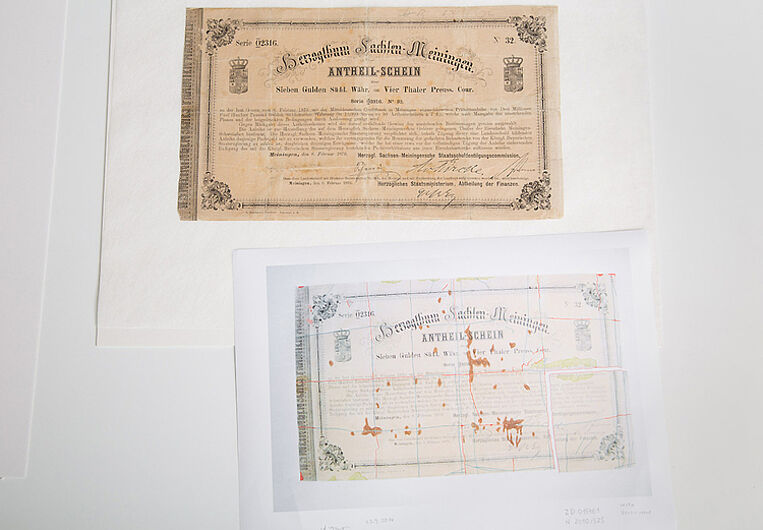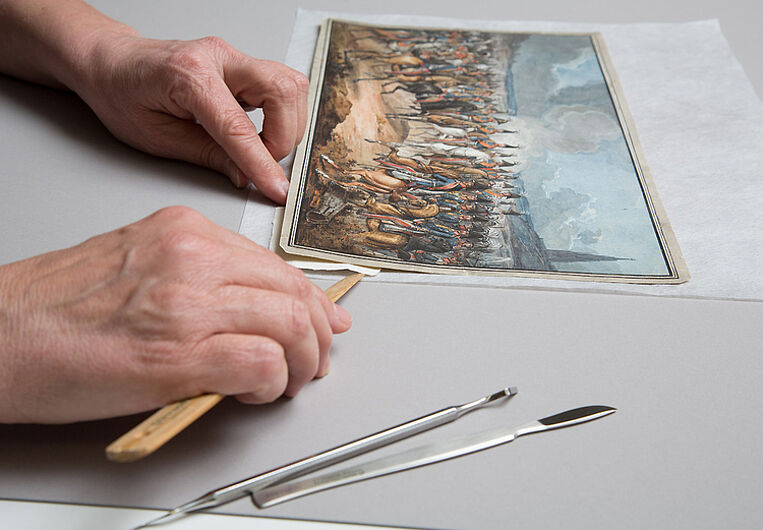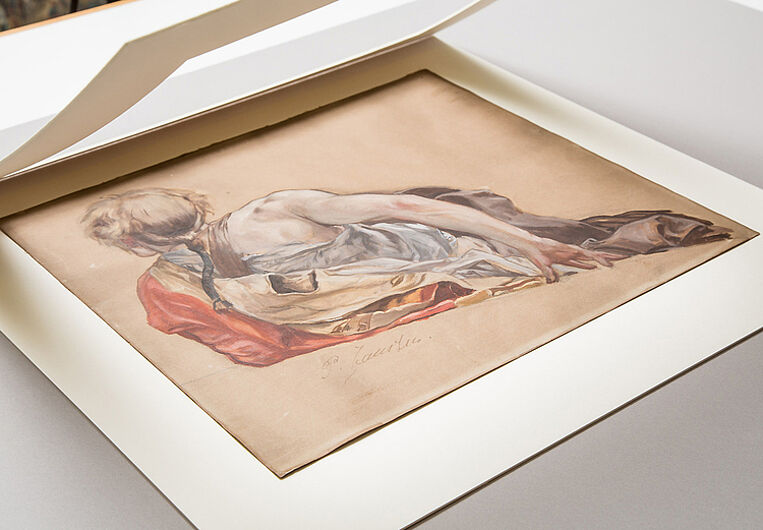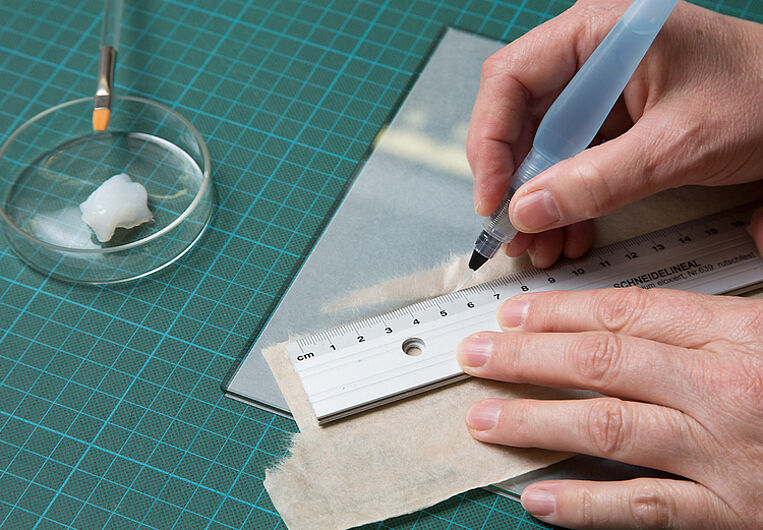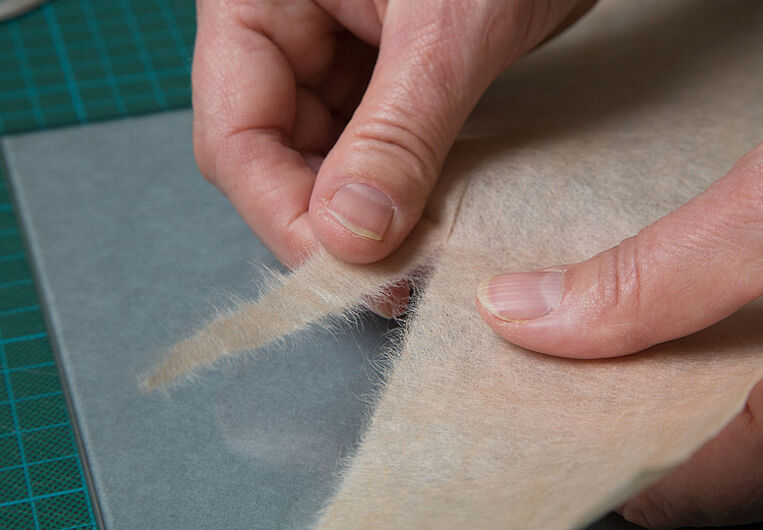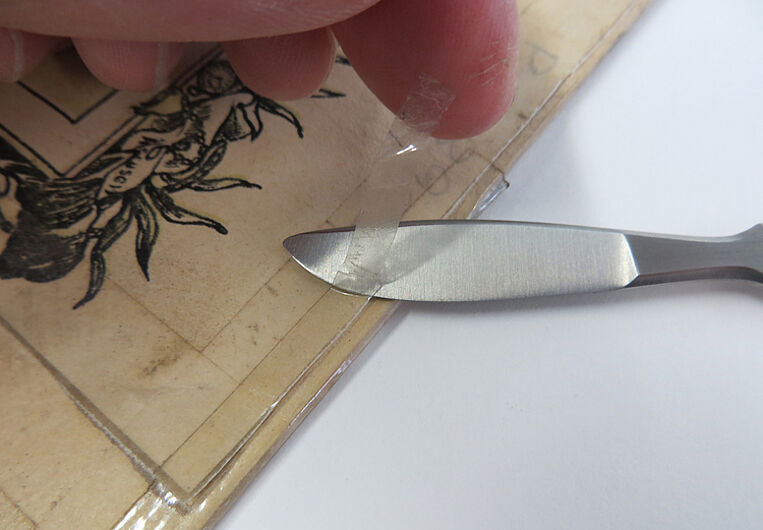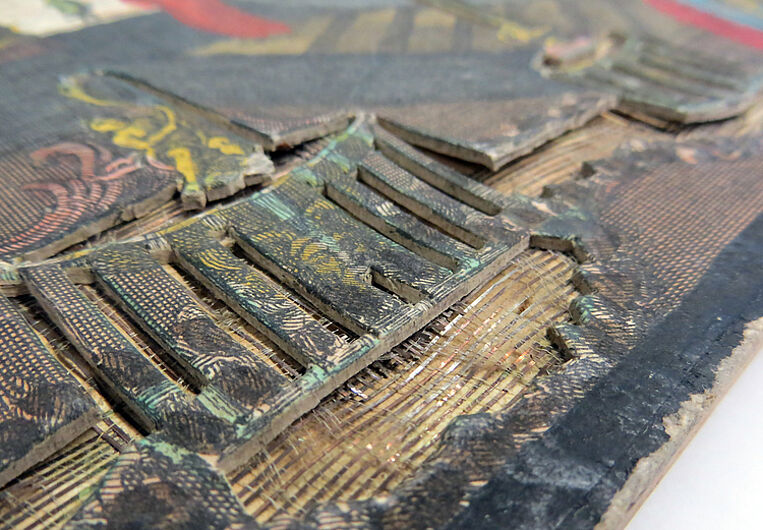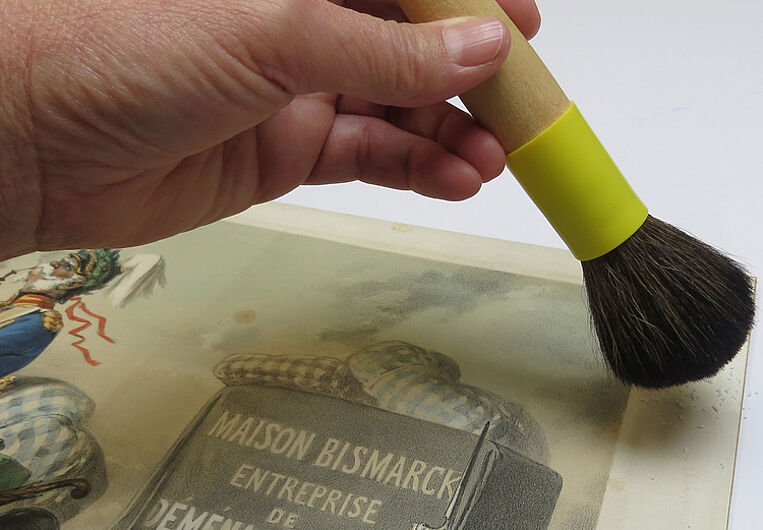Paper Conservation
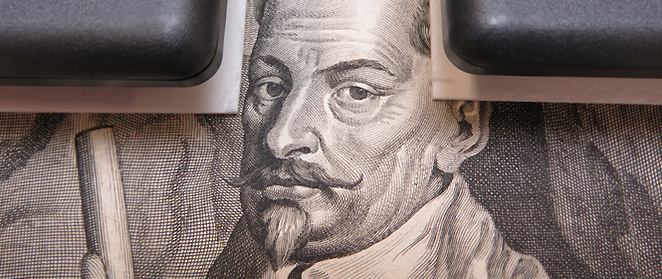
The variety of paper objects in the department ranges from: works of art on paper, prints, drawings, and everyday objects from paper money, and packaging for toys to historical maps and posters from current political demonstrations.
Conservation implies the measures merely to preserve the object, and restoration incorporates additional treatments mainly related to the aesthetic aspects of an object. Both require having to make a wide range of decisions regarding treatments. The traces of wear on a letter, for example, are part of its history, whereas stains on a printed work of art could disrupt the viewing or interpretation of the object. Research in recent years has brought a greater understanding of the degradation processes of paper. Through further development and refinement of frequently used traditional restoration methods and materials, it has been possible to develop more efficient and gentler treatments.
Moreover, a continuous and relevant task is to improve storage conditions through the use of proper packing with acid-free materials. They help to slow down the ageing process and increase the longevity of objects.
Paper is present in nearly every exhibition as it is used for written documents as well as artworks. The presentation methods of paper objects in vitrines and frames often require tailored-made solutions with attention to protective and when possible, invisible mounts. To this end, new mounting techniques are continually being developed.
